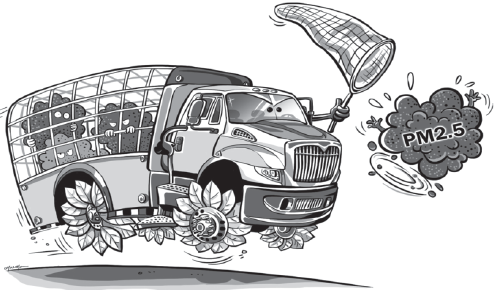 |
|
Li Min/China Daily |
A number of achievements have been made in addressing environmental protection issues during the 12th Five-Year Plan (2011-15), and efforts to overcome the country's environmental challenges will continue to be made during the next five-year plan.
In 2012, China's Ministry of Environmental Protection revised the Ambient Air Quality Standard, and it officially came into effect in about 74 cities the following year. For the first time, the new ambient air quality standards include fine particulate matter PM2.5 into the items to be monitored and set the maximum concentration. They also set a limit for the concentration of ozone, and strengthen the limit on the annual average concentration of PM10. The newly added monitoring and disclosure of PM2.5, in particular, has prompted more Chinese to take local air pollution seriously in the last three years.
In 2013, just 74 cities that monitor air quality have disclosed their PM2.5 pollution - mostly provincial capitals and major cities in East China's Yangtze River Delta and Southeast China's Pearl River Delta, and North China's Beijing-Tianjin-Hebei region. But 367 cities have disclosed their PM2.5 pollution this year.
Admittedly, the country's air quality is far from satisfactory, as over 80 percent of the monitored cities failed to live up to the latest national standard during the first three quarters of the year. But it has significantly improved in just two years, especially in a number of smog-stricken cities of North China, where the daily PM2.5 concentration reached 500 micrograms per cubic meter in early 2013, nearly 20 times the World Health Organization allows in its Air Quality Criteria.
Beijing suffered badly from smog that year, at its worst the hourly PM2.5 concentration at some local monitoring stations approached an astonishing 1,000 micrograms per cubic meter.
Harbin, capital of Northeast China's Heilongjiang province, also fell prey to smog in October 2013, causing the temporary shutdown of local airports and over 2,000 schools. Even in Shanghai, a city which has seldom encountered heavy air pollution, the local PM2.5 concentration exceeded 700 micrograms per cubic meter by the end of 2013.
In effect, the root cause of the prevailing extreme air pollution two years ago is that the industrial development was put before environmental protection in parts of China, as a result of the lack of public attention. In response, the State Council issued the Action Plan of Prevention and Control of Air Pollution the same year, the toughest of its kind, pledging to improve the nationwide air quality and significantly reducing the number days with severe air pollution over the five years.
This year has already witnessed steady improvement in many cities, thanks to the revised AAQS and the nationwide disclosure of PM2.5 data, which has topped the agenda of more provincial governments since then. Following the revised Environmental Protection Law came into effect in January, a harsher Law on the Prevention and Control of Atmospheric Pollution will also come into effect in 2016. In addition, to reduce China's dependency on coal resources, a major contributor to air pollution in the country, Chinese Premier Li Keqiang called for zero growth in the consumption of coal in key areas of the country in March. Such efforts have paid off, as the first three quarters witnessed a year-on-year decline of 12 percent in PM2.5 concentration in 190 cities, yet, this is just the beginning in the face of a protracted fight against air pollution and the country's many other environmental challenges. The authorities will have to show the same determination they have in tackling air pollution to address these challenges over the next five years.
The author is assistant manager of Climate and Energy Campaign, Greenpeace East Asia.

I’ve lived in China for quite a considerable time including my graduate school years, travelled and worked in a few cities and still choose my destination taking into consideration the density of smog or PM2.5 particulate matter in the region.